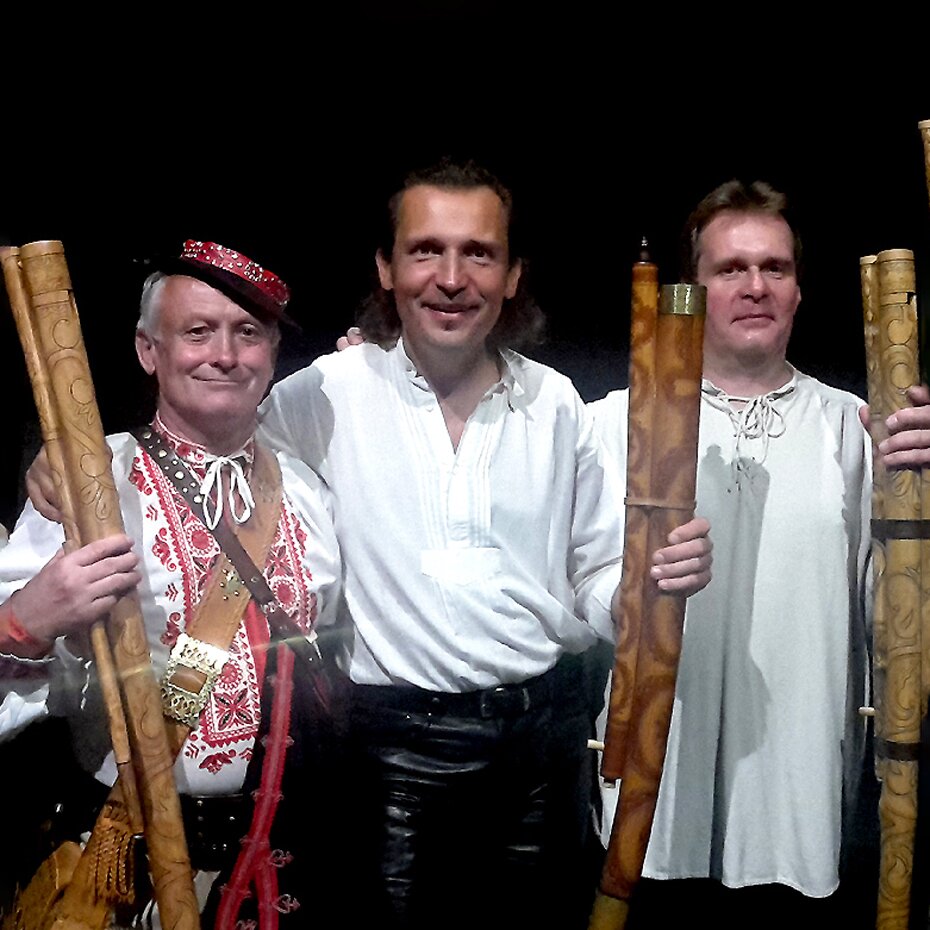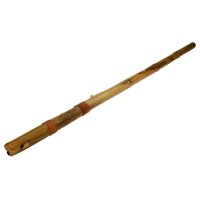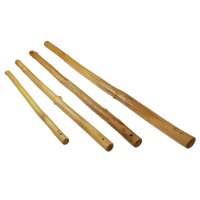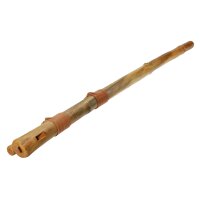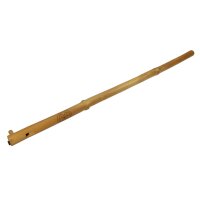The musician, composer and music teacher Bernhard Mikuskovics spoke to Helen from DAN MOI about his very personal story with the Slovakian flute Fujara. "I appreciate the visual beauty of the Fujara; I appreciate the sensation to feel the naturally grown elderberry branch in its current form while playing; I appreciate its unique sound and the feeling of unity with all beings when I produce a sound." Bernhard Mikuskovics plays those sensitive instruments practically everywhere. The sound of the instrument comes either in nature or in a church particularly well into effect. The interview aims at inspiring the listener to try out the Fujara, even at uncommon places – to get out of the own four walls.
How did you discover the Fujara for yourself?
BM: Many years ago, way before the big didgeridoo boom in the 90's I started to play the didgeridoo and got to know different musicians. One of those musicians was a Czech who someday brought an instrument with him into a bar that was hidden in a long sack and only the lower part could be seen. At first I thought this would be a didgeridoo and I asked him whether I could take a look at it and he replied that that would be a flute. As I saw it studded with traditional floral patterns I was instantly excited and as I heard its sound I knew the very second I wanted to have such a flute. During a street music gig I got to know a Slovakian musician who I asked whether she would know such a flute. She nodded and replied that even in Slovakia a Fujara would be a rarity. As I met her again for a jam session she told me that she watched a documentary on TV about a man who built the longest Fujara. She wrote down his address and we decided to go together to Central Slovakia to get a Fujara for me.
From your perspective, what does one need to be mindful about to produce a good sound with the Fujara? Is it complicated to play?
BM: Naturally, the correct posture during playing is important, upright with the thumb and the middle finger of one hand covering the upper two holes and with the middle finger of the other hand covering the lower finger hole. Equally important is controlling your breath. Apart from playing straight tones you will be able to generate tones with trilling notes in your play. And of course there is the Rozfuk, the powerful rhythmic blow, which is a particularity of this flute that instantly puts a spell on the player and the listener.
The "complicated thing" about the Fujara is that it has only 3 grip holes, but there are a number of tones that can be produced by using the overblowing technique, fork fingering and partially covering of the grip holes. You get a good idea of the instrument if you enjoy experimenting a lot during playing.
What music do you play on the Fujara, how do you use it as a musician?
BM: That pretty much differs. Basically, the traditional melodies from Podpoľanie, the home of the Fujara in Central Slovakia, just sound great. Since I am not a Slovakian I play only a few of those melodies, though. I like to combine the Fujara with overtone singing, but I also use it for solo improvisation or with other instruments.
What makes the Fujara special to you?
BM: The Fujara has quite a few particularities. It starts with its unusual size. But what I find in particular interesting that due to the position of the Fujara the player stands right underneath the spot, where the sound is generated. Like having a sound shower the player is virtually bathing in sounds. I don't know something of the kind with any other instrument.
Does the Slovakian tradition still play a role for your work with the instrument?
BM: Only to a certain degree as naturally as I am approaching traditional melodies every now and then through the way I am playing, but it doesn't matter so much for me as I don't speak Slovakian and I don't bear any connection to their traditional context.
I find it rather exciting that you went to the Fujara festival in Slovakia! What impression did you get from the Fujara players there and today's meaning of the instrument?
BM: First of all this was a fantastic thing, to be invited as a non-Slovakian main artist to such a festival in Detva, which is the centre of the Slovakian folklore tradition. There, I was seen as an exotic due to my way of playing, in particular in combination with overtone singing. That is because the Slovakian Fujara players are strongly connected to traditional ways of playing and to using the Fujara in combination with shepherd/outlaw songs. As I don't speak Slovakian the language barrier prevented me from having deeper talks with the people. Of course, I would have had many questions. But luckily I could get to know the head of organisation of that festival, Dusan Holik. He was a very honourable Fujara player who unfortunately passed away already.
How long is your Fujara, to what keynote is it tuned and what sound material are you using?
My favourite Fujara that I play most as sound-wise it suits me best, but also as it consists of two parts and is easy to transport, is tuned to keynote G and its length is 170 cm. But I also have Fujaras in keynote H: approx. 135.5 cm; in G sharp: approx. 164.5 cm; in C: approx. 127.5 cm and in G: approx 84.2 cm.
What can you NOT do with a Fujara?
With a Fujara you can NOT transpose tone scales.
What octaves can you play with your instrument?
On my favourite Fujara I can play four octaves and a few tones above if I count from the deepest tone that is admittedly very quiet and therefore I only use for the outro of my tunes. From the usual keynote upwards it is approximately three and a half octaves. During playing the Fujara I am melodically in the range of the overtones and the mixolydian scale.
